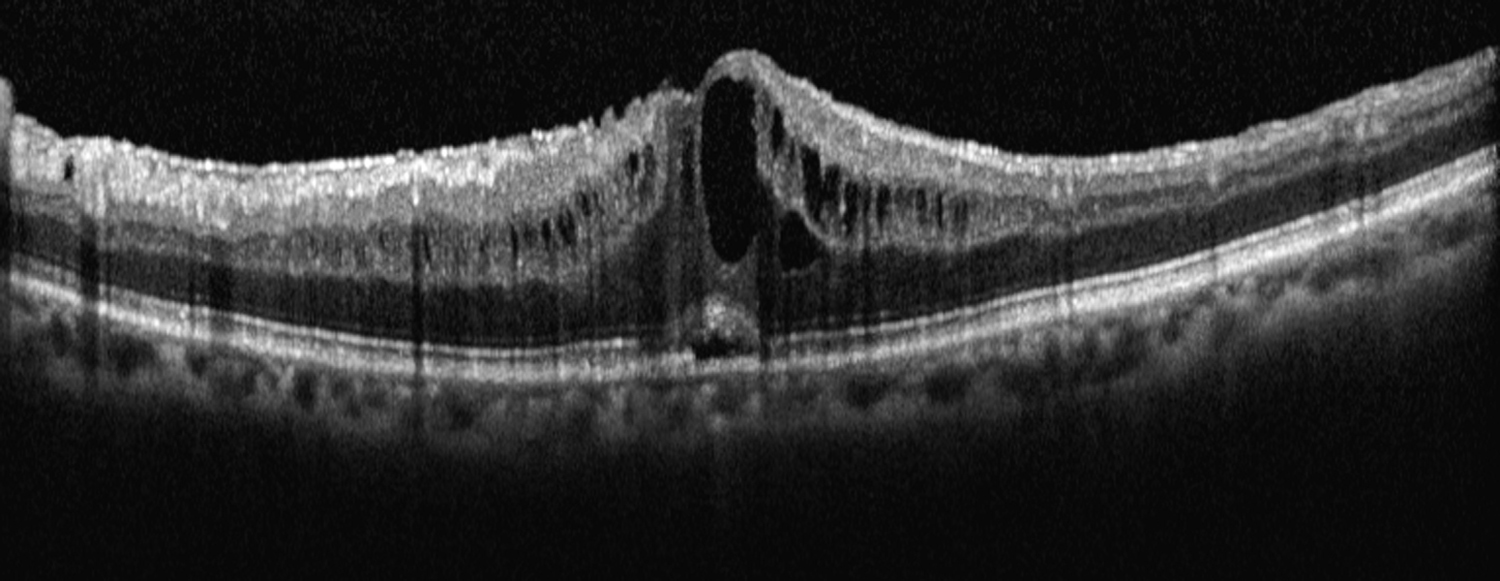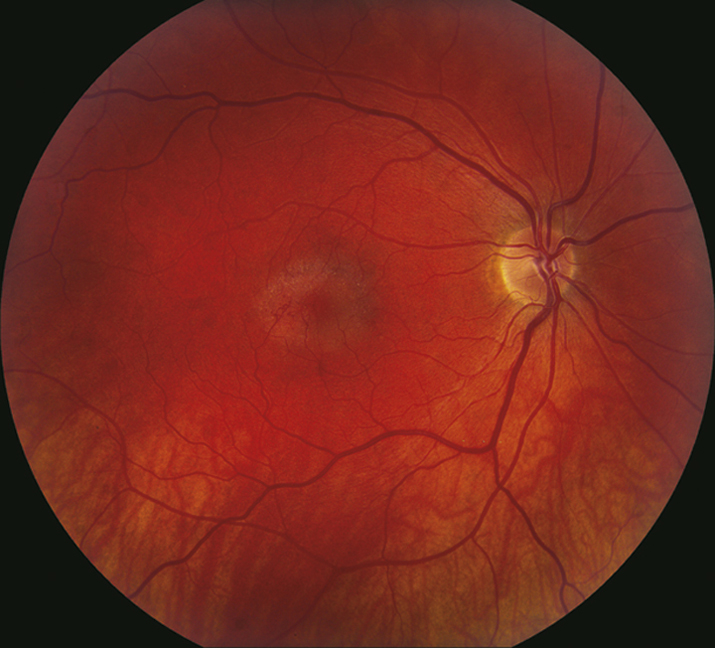(See Figures 11.14.1 to 11.14.3.)
Critical
Irregularity and blunting of the foveal light reflex, macular thickening with or without small intraretinal cysts in the foveal region.
Other
Vitreous cells, optic nerve swelling, and dot hemorrhages may be observed depending upon etiology of CME.
11-14.3 Optical coherence tomography of cystoid macular edema.

11-14.2 Intravenous fluorescein angiography of cystoid macular edema.

11-14.1 Cystoid macular edema.

Treat the underlying disorder if possible. For CME related to specific etiologies (e.g., diabetes, retinal vein occlusion, intermediate uveitis, etc.), see specific sections.
- Topical NSAID (e.g., ketorolac 0.5% q.i.d., bromfenac 0.09%, or nepafenac 0.3% daily) often in conjunction with topical steroids (e.g., prednisolone acetate 1% q.i.d.).
- Discontinue topical epinephrine, dipivefrin, or prostaglandin analog drops and medications containing nicotinic acid.
- Other forms of therapy are often used to treat CME depending upon etiology:
- Subtenon steroid (e.g., triamcinolone 40 mg/mL, inject 0.5 to 1.0 mL).
- Intravitreal steroid (e.g., triamcinolone 40 mg/mL, inject 1 to 4 mg).
- Intravitreal anti-VEGF therapy (e.g., bevacizumab 1.25 mg in 0.05 mL).
- Systemic steroids (e.g., prednisone 40 mg p.o. daily for 5 days and then taper over 2 weeks).
- Systemic NSAIDs (e.g., indomethacin 25 mg p.o. t.i.d. for 6 weeks).
- Topical or systemic carbonic anhydrase inhibitors (e.g., dorzolamide 2% t.i.d. or acetazolamide 500 mg p.o. daily starting dose) in cases of RP-associated CME.
- CME with or without vitreous incarceration in a surgical wound may be improved by vitrectomy or YAG laser lysis of the vitreous strand.
Postsurgical CME patients should be started on a topical NSAID and a topical steroid with follow up in 4 to 6 weeks to determine response to topical drop therapy. Other forms of CME should be followed in a similar time frame to monitor response to initial therapy.


